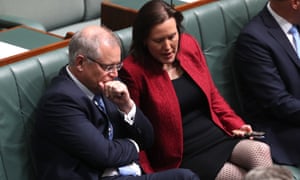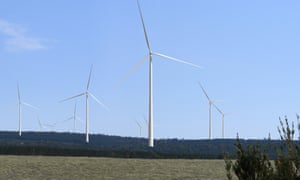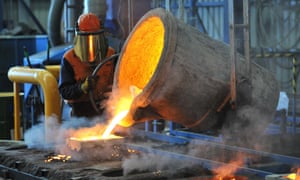Posted
44 minutes ago
When the Reserve Bank announced recently that it was
factoring climate change into interest rate calculations, it underlined a
mainstream acceptance of potential impacts for a warming planet.
Climate change now had economic consequences.
But
resistance to the premise of human-induced climate change still rages,
including in regional and rural communities, which often are the very
communities already feeling its effects.
"When you look at the
results of different surveys going back a few years, farmers were four
times more likely than the national average to be climate change
deniers," said Professor Mark Howden, director at the ANU's Climate
Change Institute.
"That was about 32 per cent versus about 8 per cent for the population average."
So, why do so many people in regional and rural areas not believe in climate change?
ABC
Central West's Curious project put that question to some experts, who
say the answer has more to do with human nature than scientific
reasoning.
Cognitive scientists vs cognitive lawyers
Professor
Matthew Hornsey from the University of Queensland has dedicated his
academic career to understanding why people reject apparently reasonable
messages.
"The metaphor that's used in my papers is around what we call cognitive scientists versus cognitive lawyers," he said.
"What we hope people do when they interpret science is that they weigh it up in an independent way and reach a conclusion.
"But
in real life, people behave more like lawyers, where they have a
particular outcome that they have in mind and then they selectively
interpret the evidence in a way that prosecutes the outcome they want to
reach.
"So you selectively
expose yourself to information, you selectively critique the
information, you selectively remember the information in a way that
reinforces what your gut is telling you."
This is
known as motivated reasoning — and online news source algorithms and
social forums are only enabling the phenomenon, allowing for further
information curation for the individual.
Perception of threat and risk
Chris Evans grew up as the son of a farmer in Western Australia's Wheatbelt and went on to become a grain farmer himself.
That is until 2004, when he walked off the farm and into a landmark research project of his own.
His
"familiarisation study" sought to understand why climate science was
being rejected by the WA farming community, and would later form the
model of approach for government ag programs.
"The assumption that
farmers would accept scientific information and acknowledge the need to
adapt was something I questioned based on my own personal experience,"
Mr Evans said.
"Certainly, global climate change was not a management or planning consideration for me when I was farming.
"Yes,
I had noticed changes in the climate over the time I had lived and
farmed in the area, [but] I would have responded in a similar fashion to
one of the farming participants I interviewed during the
familiarisation study: 'Of course it's changed ... it's always changing.
We have had big dries before back in the 1940s and 1970s but then it
turned wet again.'"
To understand why farmers reject climate
science, Mr Evans says it must be acknowledged that humans don't
interpret information in a vacuum.
Rather, humans develop and
harbour perception of threat/risk based on a framework of socio-cultural
beliefs, values, history, traditions and knowledge.
This is true for all assessment — scientific and non-scientific, he said.
"For example, WA farming and rural social
sectors may have a low perception of threat/risk because of an inherent
tolerance of climate threat/risk due to the high variability in the WA
climate.
"Conversely, science and policymakers' perceptions of
climate change threat/risk may be conceptualised in a different social
framework of values and beliefs drawn from a broad view perspectives of
evidence and potential impacts on a national and international scale."
It
is this disparity in socio-cultural frameworks that can create a gulf
of distrust between farmers, scientists and policymakers, bringing into
question motivations and where the truth actually lies.
Put simply, Mr Evans describes it as the contested space between local knowledge and science.
He says the way to overcome it is to apply the science at a local level, that is, contextualise the risk.
"Farmers have their own data and will reject external data if it's not local enough."
Erosion of science credibility
Professor
Hornsey says there is another force fanning the flames of distrust
between the scientific and non-scientific communities.
"One thing
that can be said without huge amounts of controversy is that there is a
relationship between political conservatism and climate scepticism in
Australia," he said.
To better understand this, the professor's
research took him to 27 countries and found that for two-thirds of
these, there was no relationship between being politically conservative
and a climate science sceptic.
But Australia's relationship between the two trailed only the United States in strength of connection, he said.
"What we were seeing was the greater the
per-capita carbon emissions of a country, the greater that relationship
between climate scepticism and conservatism."
Professor Hornsey
argues that per-capita carbon emissions is an indicator for fossil fuel
reliance, which in turn creates greater stakes for the vested interests
at play.
"When the stakes are high and the vested interests from
the fossil fuel community are enormous, you see funded campaigns of
misinformation, coaching conservatives what to think about climate
change," he said.
"That gets
picked up by conservative media and you get this orchestrated, very
consistent, cohesive campaign of misinformation to send the signal that
the science is not yet in."
Professor Hornsey points
to the work of American historian Naomi Oreskes, who co-authored
Merchants Of Doubt, which asserts that campaigns of misinformation were
tools used by vested interests as a means of controlling the narrative.
The
ultimate impact of sustained misinformation around Australia's climate
science has been the erosion of scientific credibility and the illusion
that scientists are in disagreement, he said.
"The science is in —
97 per cent of climate scientists agree that humans are contributing to
global warming," Professor Hornsey said.
"But most people feel as
though that number is much lower and that there's quite a lot of
diversity of opinion around this in the science community.
"This is not true, but that's the success of these campaigns of misinformation."
Wicked problem
In
socio-economic terms, a wicked problem is defined as one that is
difficult or even impossible to solve, given the amount of cross-current
and inter-related processes and resources required to resolve it.
The drug trade, human trafficking and climate change are all classic wicked problems.
Professor
Hornsey believes current discourse can make farmers feel as though they
are at the centre of an overwhelming societal problem, triggering
further psychological rejection of the science.
"I feel sorry for farmers around the climate change issue, because this is a problem that has been caused collectively.
"Farmers
are only a small part of the problem but they are going to be a huge
part of the solution, so I think they feel put upon.
"They
feel like they are constantly being lectured about their need to make
sacrifices to adapt to a set of circumstances that are largely out of
their control."
Don't talk about climate change
In 2010,
in response to a drought policy review panel, the Commonwealth initiated
a pilot of drought reform measures in Western Australia.
John
Noonan from Curtin University led the program, which went on to have
staggering success in converting not only participating farmers'
attitudes to climate science, but also in restructuring their farm
management models in response to a changing climate.
"First of all, when talking with farmers, we
didn't call it the drought pilot — we used the name Farm Resilience
Program," Mr Noonan said.
"If you go in to beat people up and have a climate change conversation, you get nowhere.
"We
got the farmers to have conversations about changing rainfall patterns
and continuing dry spells, rather than us telling them what to do.
"And
they told us everything that we needed them to tell us for us to
reflect that back to them and say, 'Well, actually, that's climate
change'.
"If you take a very left-brain, very scientific approach
to these matters, you are going nowhere, and what we used was very
right-brain, very heart and gut-driven — and it worked."
Mr Evans
agrees, underscoring the deeply personal connection farmers have to the
land, its role in their business approach, and why the message must be
managed psychologically rather than scientifically.
"Ultimately,
for a farmer to confront the reality that this new climate might be
permanent, requires them to go through the five stages of grief: denial,
anger, bargaining, depression and acceptance."
Who asked the question?
Ross Bowden is a
statistician by profession, who investigated the effect of location and
climate change on ambient air temperature in Perth as part of his thesis
last year.
"The reason I posed my question was that, as a
scientist, I'm very aware of the possible catastrophic effects from
rising CO2 emissions. The outcomes seriously scare me, even as a person
living a quiet, secure life in suburban Perth, let alone depending on a
stable climate for my livelihood as a farmer does."
Philippa Morris runs a bookshop in the town of Moree in northern NSW.
She's
concerned there's a level of denial among those living in rural areas
due to how much is at stake, for farmers in particular.
"I do
think a lot about this subject — far too much. I keep coming back to a
quote from a John le Carré novel, 'the more that you have paid for a
fake, the less likely you are to accept that it is a forgery'."





















